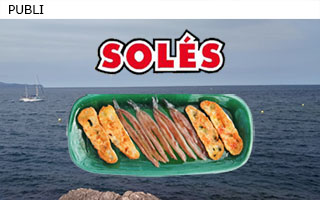Muga’s River Valley
We are so very proud of our coast, the Costa Brava, that we often forget that the Pyrenees’s and other close-by delightful areas are worth a visit. We want to make an effort to make our readers familiar with other areas, and in this case one of the nicest landscapes of the region: the valley of the La Muga river and its artificial lake, Darnius-Boadella.
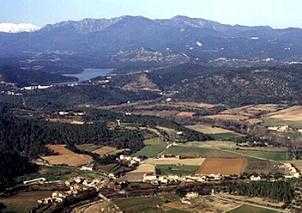 The valley is scarcely a half hour drive by car away from the coast. Impatient travellers can take the motorway N-II from Figueres toward La Jonquera, and in a few kilometres, on the left, the village Pont de Molins
The valley is scarcely a half hour drive by car away from the coast. Impatient travellers can take the motorway N-II from Figueres toward La Jonquera, and in a few kilometres, on the left, the village Pont de Molins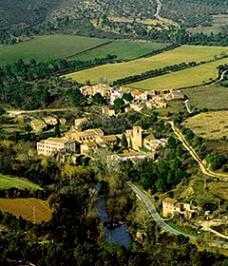 where the Muga valley begins. Others will use the smaller road that passes by Garriguella and will be rewarded with a gentle curving road through landscape resembling Toscana.
where the Muga valley begins. Others will use the smaller road that passes by Garriguella and will be rewarded with a gentle curving road through landscape resembling Toscana.
The green: the Muga and the forest quickly banish remembrances of the summer heat. Small villages such as Biure,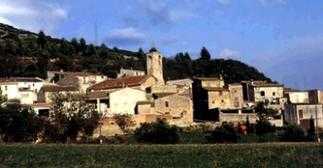 Les Escaules and Boadella are all worthy of a visit. The Muga invites for bathing and the forest for walking. We recommend however to our readers to procure a local road map and discover the area for yourself. It is worthwhile.
Les Escaules and Boadella are all worthy of a visit. The Muga invites for bathing and the forest for walking. We recommend however to our readers to procure a local road map and discover the area for yourself. It is worthwhile.
Climate, vegetation and animal world of the Muga valley
The climate of the valley corresponds to the typical Mediterranean climate, hot and /or damp (dryness’s in the summer and mild winters, with rains in the autumn and spring). The temperatures are rather moderate. The annual average is 17C. The medium temperatures in January are 13C, and in the hottest month, August, they amount up to 30,3C. The precipitation amounts to 680 min per year. The wind Tramontana blows primarily in the winter, sixty to seventy days per year.
Most years, it does not snow at all, and if there is a snowfall, it does not stay for long. Likewise, the feared hailstorms, feared by farmers at planting and harvest times, are also a rare occurrence. During the autumn, rainfalls swell the Muga, but unlike former times, this is no longer dangerous since they straightened the riverbed when the built the dam, in 1969, for the artificial lake of Darnius.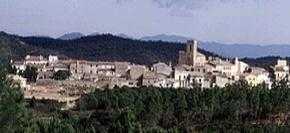
Also, the vegetation corresponds to the Mediterranean. The mountains are covered all year round with green pines. In addition, with stone oaks and underwood (juniper, ivy, cork oaks, heath herb, broom, rosemary). Along the Muga, many trees form small forests: plane trees, ashes . . . that entice the visitor to rest a while in their shade.
Between the fields and gardens are oaks and many different welfare plants. We can admire majestically high olive trees, true wonderworks of the nature; the olive trees of the “Carrer sec” in Boadella are the oldest and the largest of the Alt Empordà. And in the autumn, we find a large diversity of species of mushrooms between the mosses in the adjacent mountains.
Around Boadella, the influence of humans has changed the fauna over the course of the time. Old farmhouses still carry the names of animals, which are not there any longer living in this region: “Cau de Llop”, the wolf hole for example or ” El Corb,” the raven. In the mountains, however, the wild pig remains well established. And, we meet game chickens, squirrels, hedgehogs, rabbits, and hares. Numerous species of bird populate the area: the ice bird, woodpecker, water blackbirds and many, many wild ducks amuse themselves on the bank or in the water of the Muga.
In the gardens nest and sing (depending upon their skill and proclivity) owls, partridges, pigeons, the cuckoo, magpie, nightingales, barn swallows, sparrows, as well as the robin.
The variety of the fish in the Muga highlights the quality of the clean fresh water. Carp is in the abundance, river eels and barbs enjoy life between the stones, and the trout population is regenerating each year. Fishing is permitted in large parts of the valley; it is sufficient a simple permission (information in the restaurant in Boadella).
The Muga – valley and its history
In the year 844 Boadella (at that time ” Buchatella “) belonged to the county Besalu and was property of the monastery Sant Marti de les Escaules. This history is included in a document, which Karl the bald gave to Adulf, first in particular well-known Abbott of the monastery. In the year 977, the place was called Bozelego, then, later Bodelego.
Beginning in the year 1115 the municipalities of the Muga valley belonged to the parish church Santa Cecilia de Terrades. A little later, 1123, Ramon Berenguer III entrusted the area to the count of Empuries. The family Vilamari, raised into the nobility, and a branch of this family, became the barons of Boadella, build and transform a for the first time 1321 mentioned castle into a gothic palace.
Up to the XVI century, the family Vilamari led the fate of the valley and its inhabitants. Afterwards, the change of ownership became more rapid: The new Sirs are called Antic d’Almogaver, Albanell etc.
In 17 Century did the population not only have to pay deliveries to the castle owner Mr. Noell, but also to the monastery Sant Pere de Rodes. In 1691, Escaules became part of Boadella. In the 18th century, the valley experienced an economic bloom. Released from the pressure of medieval feudalism, the inhabitants built numerous new houses, which were passed on to their first-born.
During the large war (Guerra Gran) Frenchman occupied the valley and the population fled into the mountains, to save their own skin. The valley passed at the side of Isabel II. And the liberals the Karolin war. The period of the civil war (1936-1939) was particularly bitter for the valley, the repression touched the citizens of the small places enormously; nine persons, all republicans, were publicly executed. After the civil war, peace returned. The inhabitants returned to their rural traditions, which still exist also today.
[cetsEmbedGmap src=https://maps.google.es/maps?q=panta+darnius-boadella&hl=es&ll=42.353724,2.854042&spn=0.234433,0.528374&sll=42.272456,3.210248&sspn=0.469473,1.056747&t=h&hnear=Panta+de+Darnius&z=12 width=350 height=425 marginwidth=0 marginheight=0 frameborder=0 scrolling=no]
